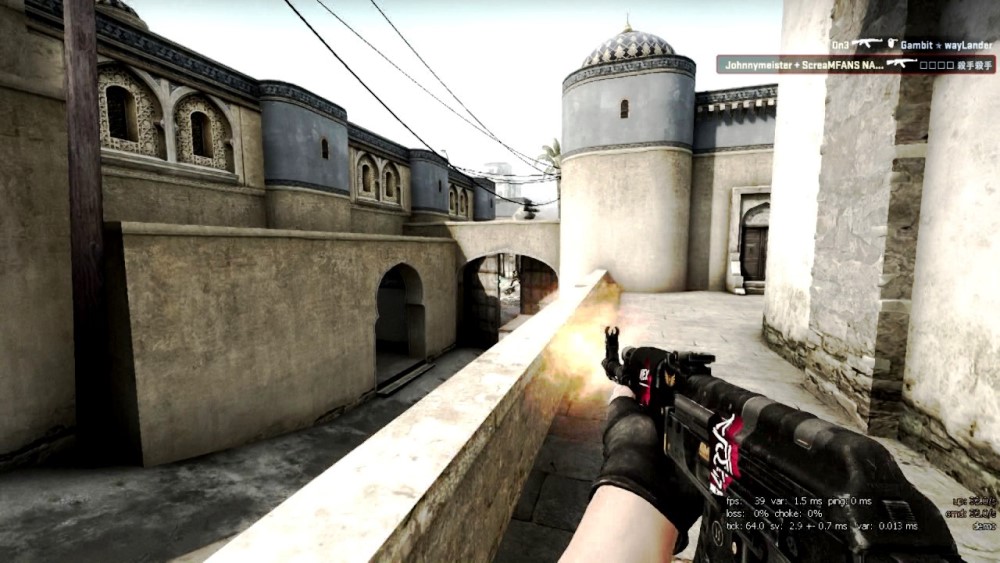
SourceMod (SM) is a plugin and extensibility platform for the Half-Life 2 series of games (like CS:GO) developed by AlliedModders. It allows server admins to create and install complex addons without having to write any code themselves.
Here’s a general overview of how to install SourceMod plugins on a CS:GO server. The specifics might vary depending on the plugin.
Before You Start
Make sure you’ve already installed MetaMod:Source and SourceMod itself on your server. If you haven’t, you’ll need to do this first.
Step 1: Download the Plugin
Find the plugin you wish to install on your server. The SourceMod site hosts a vast library of plugins that you can browse through. Make sure the plugin is compatible with your server’s version of CS:GO.
Step 2: Extract the Files
Most plugins come in a .zip or .rar file, so you’ll need to extract them before uploading. You should have files with extensions like .smx and .sp, possibly with configuration files as well.
Step 3: Upload the Plugin
Upload the .smx file to your server. This file usually goes into the addons/sourcemod/plugins folder.
Some plugins come with additional configuration files. Upload these to the appropriate directories (often addons/sourcemod/configs or addons/sourcemod/translations).
Step 4: Reload SourceMod
You’ll need to let SourceMod know that a new plugin has been added. If your server is running, you can either restart it or enter the sm plugins load <plugin name> command in the server console.
Step 5: Configure the Plugin
Some plugins will work out-of-the-box, while others might require some configuration. Check the documentation that came with the plugin for instructions.
Step 6: Verify Plugin Installation
To verify that the plugin has been installed successfully, you can use the sm plugins list command in the server console. If everything is working correctly, you should see your new plugin listed.
Remember that each plugin may have its own specific installation steps, so always refer to the instructions provided by the plugin author.

Step 1: Download the Plugin
To download the plugin you wish to install on your CS:GO server, follow these steps:
- Identify the Plugin: First, you need to decide which plugin you want. You can find a variety of plugins in the SourceMod plugins section or on other trusted CS:GO related communities.
- Check Compatibility: Ensure that the plugin you choose is compatible with your CS:GO server version.
- Download: Click on the download link or button for the plugin. This should start the download process. The plugin will usually download in a .zip or .rar file.
Please note, be cautious when downloading files from the internet. Make sure to download plugins only from trusted sources to avoid potential security risks.
Step 2: Extract the Files
Once you’ve downloaded the plugin, it will usually be in a compressed format like .zip or .rar. To extract these files, you’ll need a program that can handle these formats. Popular choices include 7-Zip, WinRAR, and for MacOS, The Unarchiver. Here are the general steps to extract files:
If you are using 7-Zip or WinRAR on Windows:
- Navigate to the location where your downloaded file is.
- Right-click on the file.
- From the context menu, select “Extract Here” or “Extract files…“. “Extract Here” will extract the files into the current folder, while “Extract files...” allows you to choose where the files will be extracted.
If you are using The Unarchiver on MacOS:
- Navigate to the location where your downloaded file is.
- Double-click on the file.
- The Unarchiver will automatically extract the files into the same folder.
After the files are extracted, you should see files with extensions such as .smx and possibly .sp. These are the plugin files that you’ll need to upload to your CS:GO server. There might also be additional configuration files depending on the plugin.
Step 3: Upload the Plugin
After you have extracted the plugin files, the next step is to upload them to your CS:GO server. To upload the plugin, you’ll need access to your server’s file system.
This process can be different depending on your hosting service, but here’s a general guide:
- Access Your Server Files: Using either an FTP client (like FileZilla) or your hosting service’s file manager, navigate to your CS:GO server’s directory.
- Navigate to the Correct Folder: Once you’re in your server’s directory, you need to navigate to the correct folder to upload your plugin. This is usually the addons/sourcemod/plugins folder.
- Upload the .smx file: Upload the plugin file, which should have a .smx extension, to the addons/sourcemod/plugins directory.
- Upload Any Additional Files: Some plugins come with additional files, like configuration or translation files. If the plugin you downloaded came with these, you should upload them to the appropriate directories. Configuration files (.cfg or .ini), for example, often go in addons/sourcemod/configs, while translation files go in addons/sourcemod/translations.
Remember to replace any placeholders with the actual names of your files or directories. It’s always a good idea to check the plugin’s documentation for any specific instructions about where files should be placed.
Step 4: Reload SourceMod
After you’ve uploaded the plugin files to the server, SourceMod needs to be told that a new plugin has been added. This can be done by either restarting the server or reloading the plugins from the server console. Here’s how you can do it:
Reload Plugins from the Console:
- Open the server console. The process of accessing the console varies depending on your server setup, so you might need to consult your hosting service’s documentation.
- Once you have the console open, type sm plugins load <plugin_name> replacing <plugin_name> with the name of your plugin file (without the .smx extension), and then hit Enter.
Restart the Server:
If you prefer to restart the server, you can usually do this through your hosting service’s control panel. The specifics of this process will depend on your hosting service, so consult their documentation or support service if you’re unsure.
After reloading SourceMod or restarting the server, your plugin should be active. To make sure everything is working as expected, it’s a good idea to test the plugin in-game or check the console for any error messages related to the plugin.
Step 5: Configure the Plugin
Some plugins may require configuration after installation. This configuration usually involves setting certain variables or parameters that control how the plugin behaves. These settings are often stored in a configuration file that gets read by the plugin when the server starts.
The steps to configure a plugin can vary, but here are some general guidelines:
- Locate the Configuration File: If the plugin comes with a configuration file, it will typically be located in the addons/sourcemod/configs directory. The file might have a .cfg or .ini extension.
- Edit the Configuration File: Open the configuration file in a text editor. Inside, you should see various settings that you can adjust. The specifics of these settings will depend on the plugin, so consult the plugin’s documentation for information about what each setting does and what values it can take.
- Save and Upload: After making your changes, save the configuration file and upload it back to the configs directory if you downloaded it for editing. Ensure that it’s in the correct location for the plugin to find.
- Reload the Plugin: After adjusting the plugin settings, you might need to reload the plugin for the changes to take effect. You can do this by typing sm plugins reload <plugin_name> in the server console, replacing <plugin_name> with the name of your plugin.
Remember that not all plugins will require configuration. Some might work out-of-the-box, while others might have in-game commands or other methods for setting their configuration. Always refer to the documentation provided with the plugin for specific instructions.
Step 6: Verify Plugin Installation
Once you’ve installed and configured your plugin, the final step is to verify that it has been installed correctly and is working as expected. You can do this by using the sm plugins list command in the server console.
Here’s how:
- Access the Server Console: The method to access the console may vary based on your hosting service, but typically it will be through the hosting service’s control panel.
- Enter the Command: In the server console, type sm plugins list and hit Enter.
- Review the List: The console will return a list of all installed plugins. Each entry will include the plugin’s name and its current status. Look for the plugin you’ve just installed in this list.
- Check the Plugin Status: The status of the plugin should be ‘running’. If it’s not, there may have been a problem with the installation process. The console may provide more information about any problems.
Also, make sure to test the functionality of the plugin in-game to ensure it’s working as expected. If there are any problems, consult the plugin’s documentation and any error messages you might have received.


